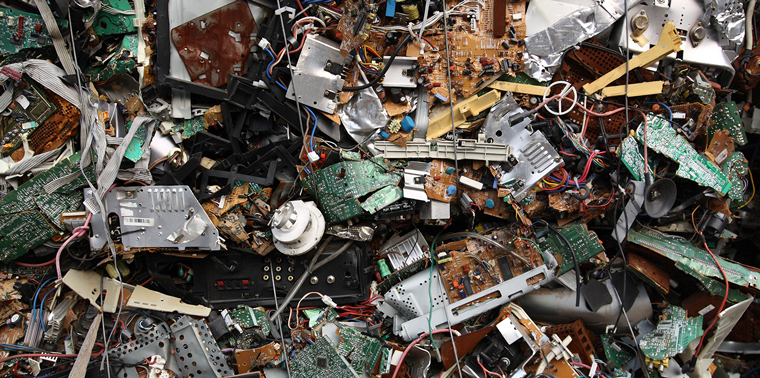February 8, 2018 — When your phone stops working or you trade up for a newer model, where does it go? Like any electronic device — from laptops to lamps, washing machines to flat screen TVs — it doesn’t just disappear. It becomes electronic waste, or e-waste — a fast-growing category of trash that in 2016 alone added up to a hefty 44.7 million metric tons (49.3 million tons) worldwide, according to The Global E-waste Monitor – 2017, a new report published by the United Nations University, the International Telecommunication Union and the International Solid Waste Association. That’s the weight equivalent of close to 25 million passenger cars.
Even though that e-waste contains billions of dollars’ worth of precious metals and other valuable components, just 20 percent was officially tracked and properly recycled in 2016, according to the new report. The remaining 80 percent? It’s not consistently documented, and most of it is likely dumped, traded or recycled in haphazard, potentially harmful ways. When disposed of incorrectly, for instance by open burning, e-waste can harm people and the environment.
The three organizations produced The Global E-waste Monitor – 2017 to draw attention to the threat of e-waste, which they project will climb to 52.2 million metric tons (57.5 million tons) by 2021. By building awareness of the nature and scope of the problem, they aim to increase global reporting on e-waste as a first step toward minimizing waste production, reducing illegal disposal and boosting recycling and the economic benefits it offers.
The report notes that of the more than 190 countries on Earth, only 41 collect international statistics on e-waste, leaving much of the world’s people with little more than anecdotal awareness of where their e-waste ends up. And while experts know that wealthier nations dump lots of e-waste in lower income countries, there are no decent statistics tracking exact numbers.

The amount of electronic waste generated (WG) and collected varies dramatically among regions. From: Baldé, C.P., Forti V., Gray, V., Kuehr, R., Stegmann, P. The Global E-waste Monitor – 2017. United Nations University (UNU), International Telecommunication Union (ITU) & International Solid Waste Association (ISWA), Bonn/Geneva/Vienna. Click to enlarge.
Because global data aren’t available, the report’s findings are estimates based on a series of statistical procedures. After noting the total weight of all electronic devices sold since 1980, the researchers calculated when products were likely discarded based on their estimated lifespan. By comparing estimates of discarded devices with recorded e-waste statistics, they approximated how much waste is generated and recycled in each of five regions — Asia, Europe, the Americas, Africa and Oceana.
Some governments are responding. By 2017, 66 percent of the world’s population was covered by some sort of national e-waste regulation, compared to 44 percent just three years prior — a jump largely due to India, which tightened its e-waste management rules in 2016. The report notes, however, that no guarantee exists that regulations are enforced effectively, and even among countries with rules on the books, many don’t cover all kinds of e-waste. It calls for enhanced efforts to develop e-waste policies and improve e-waste reporting as key steps toward correcting these deficits. ![]()
Ensia shares solutions-focused stories free of charge through our online magazine and partner media. That means audiences around the world have ready access to stories that can — and do — help them shape a better future. If you value our work, please show your support today.
Yes, I'll support Ensia!
